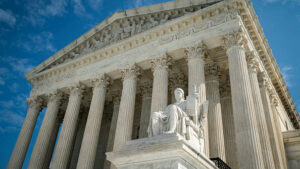
Tracing the Key Rulings and Cultural Shifts That Have Shaped U.S. Abortion Law
Prenatal Protections
FRG Resources
The current U.S. abortion landscape has been shaped by decades of cultural, political, and legal changes, evolving from the landmark Roe v. Wade decision in 1973 to the recent and historic Dobbs v. Jackson Women’s Health Organizationruling in 2022. These cases have set the course of abortion law, balancing rights, restrictions, and protections while reflecting deeper societal shifts.
Roe v. Wade initially established a constitutional right to abortion, fundamentally changing both policy and public perception nationwide. In Planned Parenthood v. Casey (1992), the Court reaffirmed Roe while allowing states to place certain restrictions, introducing a framework that accounted for both individual rights and states’ regulatory interests. Another significant case, Gonzales v. Carhart (2007), upheld the federal Partial-Birth Abortion Ban Act, highlighting judicial support for limits on specific abortion procedures in later stages of pregnancy.
In June 2022, the Dobbs decision returned abortion regulation to individual states, fundamentally altering the legal landscape once more and prompting diverse state laws and local debates across the country.
At First Rights Global, we provide comprehensive resources to educate advocates on the history and evolution of U.S. abortion law. We empower individuals with knowledge of these pivotal rulings so they can engage thoughtfully and confidently in discussions about abortion and prenatal protections. By understanding this complex legal history, advocates are better equipped to participate in informed dialogues that lay the groundwork for compassionate, life-affirming protections and policies.
